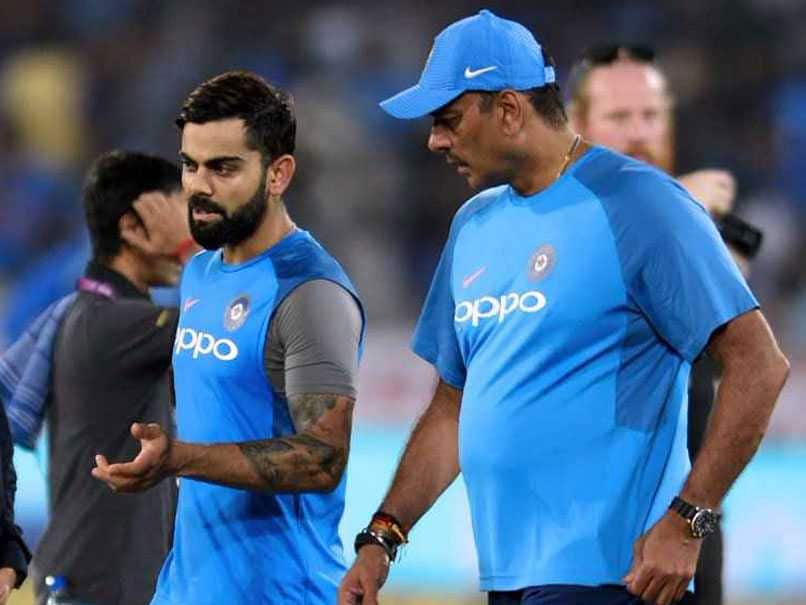Captaincy has always remained a sensitive matter in Indian cricket. Be it the Sourav Ganguly-Greg Chappell saga or MS Dhoni’s call to quit Test captaincy in the middle of the Australia tour, a lot of changes in leadership have been subjected to intense debates over the years. The sacking of Virat Kohli follows the same pattern! In his initial years as a man in-charge, Kohli became the all-powerful captain of the team, who could get things done his way. It only helped that there was a Supreme Court run-Committee of Administrators, who relented to each and every demand of his – some very fair and some unfair. And then came a time when the traditional administrators were back in the business along with a very powerful secretary and a president, who knows a thing about being a successful captain himself.
It is very evident that over the years BCCI’s line of communication and its choice of expression has often been a euphemism when it comes to dealing with the difficult questions. Almost two decades back, Trevor Johns in Australia could easily tell a very powerful Steve Waugh (Test captain) that the selection committee had decided to go in a different direction by choosing Ricky Ponting the next ODI captain which left Waugh shocked (the confession is there in his book) but in Indian cricket even a very powerful President like Sourav Ganguly finds it tough to call a spade a spade. In the end, once an invincible cricket captain has been dispatched into the sunset by a board which rarely encourages the cult of one man.
Three months after relinquishing T20I captaincy, Virat Kohli has now been unceremoniously sacked from the ODI captaincy as well. Of course, this is not shocking, but what is baffling indeed is that why did Kohli fail to see the writing on the wall which was in pretty bold and in caps letters?
Even if Kohli desperately tried to salvage his reputation by ‘quitting’ on his own terms by announcing his decision just ahead of the high-profile T20 World cup in the UAE, he was clearly aware what was going on in the corridors of Indian cricket’s power centre. That he still had the audacity to express his desire to lead India in Tests and ODIs, was even more shocking. In a forlorn manner, he tried to remain his own man to the bitter end, daring publicly to the BCCI, and to a lesser extent, the selectors that ODI captaincy was his legitimate right.
“Understanding workload is a very important thing and considering my immense workload over the last 8-9 years playing all 3 formats and captaining regularly for last 5-6 years, I feel I need to give myself space to be fully ready to lead the Indian team in Test and ODI cricket,” he wrote on his social media platforms (Twitter and Instagram) on September 16.
Despite Kohli’s brave articulation on his resignation nobody should imagine that it was on his terms.
Expectedly, this posturing of self-anointment too didn’t go down well with the powers that be. Even the suggestion by Kohli that who should be the future white ball captain (Rohit in T20) was seen as some sort of tactical move by the Test captain to convince the world that he was still deciding his fate. Far from truth was the harsh realities of Indian cricket no matter how Virat Kohli’s stature may have been. Maybe throwing an open challenge to the powerful BCCI officials that if they wanted to replace him, they should try to sack him was a fatal error.
Like time and tide, BCCI too waits for no one it seems, especially for someone who seems to be losing his pre-eminence as a batter. This had happened to Sachin Tendulkar and Sourav Ganguly in the past. The likes of Rahul Dravid, Anil Kumble and MS Dhoni decided to leave when they realised that if they didn’t do it themselves, ignominy of sacking wasn’t far away.
One can always argue that by not winning a global trophy shouldn’t be the only criteria to judge a captain’s greatness. And, to be fair, Kohli had just captained in 3 white-ball global tournaments, the 2017 Champions Trophy, the 2019 ODI World Cup and the 2021 T20 World Cup and he wasn’t a disaster in the first two global assignments. Yes, his swansong tournament was a forgettable outing but overall, his record in ODIs had been nothing short of phenomenal.
Under Kohli Indian cricket otherwise had been a behemoth in limited-overs cricket. If statistical evidence were required to prove how good team had been since Kohli permanently took over the rein of ODI captaincy in 2017, you must know that in 17 bilateral series, India won 13 and lost just 4! The 2023 ODI World Cup is scheduled in India and at home Team India had been impossible to beat. Losing a solitary series under Kohli against Australia at home in 2019 was a rarity. Overall, in 95 ODIs as skipper, Kohli won 65 and lost just 27 and his win percentage in the history of ODI cricket was only inferior to Hansie Cronje, Ponting and Clive Lloyd. However, like Cronje in past, Kohli’s legacy will never be judged by win percentage but a World Cup win like for Llyod and Ponting. Needless to say, the bilateral records or win percentage don’t make a captain truly great and hardly anyone cares unless and of course you are a die-hard Viratian.
In social and in traditional media the noise was often between ‘Kohli should continue to lead’ and ‘Rohit’s time has come’, and the latter easily outnumbered the former. The social media warriors can keep pointing that Kohli’s team lost (28%) lesser matches than even the great MS Dhoni’s side (37%) or may even argue (perhaps rightly so) that except in England (they came very close to winning in 2018) India won in the SENA countries (arguably a better yardstick to judge a captain from subcontinent) along with West Indies and Sri Lanka.
Of course, the above arguments also do not make Kohli a paragon. Far from it, in fact. Sadly, Kohli is often discussed and criticised for his selection (and non-selection) and too much backing for some players (like Hardik Pandya) or pushing so little for a very fine player (R Ashwin) in his time as captain. After, the semi-final exit in England in the 2019 World Cup, the young wrist-spinners Kuldeep Yadav and Yuzvendra Chahal suddenly went off the radar. Kedar Jadhav was being groomed as a finisher for a couple of years and suddenly lost the favour from captain. The poor handling of Ambati Rayudu (bizarrely axed from the 2019 World Cup squad) can’t be entirely put on the selection committee. It was Kohli who had publicly backed Rayudu to be the designated No.4 for the World Cup and the indecisiveness ultimately proved very costly as the No.4 issue became the single biggest point of discussion pre and post the tournament.
However, what seem to have hurt Kohli’s cause because most is his own struggle as a batsman in the last two years across the formats. Only 560 runs in a dozen ODIs without a century. His average during this period is 46.66, which is significantly below his career average of 59.07. The fall is more accentuated if you compare his batting form from 2017 to 2019 where it was nearly 80! In T20Is during the same period, it hasn’t affected his numbers severely (594 runs at 49.50) but the format which matters most to him which is red ball cricket, his batting average around 26 in 13 Tests in the last two years has made him look mortal. From 2017 to 2019, Kohli was averaging around 64! If Kohli was still making runs like King Kohli of yesteryears, perhaps Chetan Sharma and his colleagues couldn’t have dared to take such a bold step.
As for Rohit Sharma, who has proved his captaincy credentials in the Indian Premier League (IPL) while leading Mumbai Indians (MI) as well as the limited opportunities he had with the Indian team as skipper, has also been keen to take the next step in his career.
“He has shown all signs of a cricketer wanting to improve across all formats”, the source said while speaking of Rohit’s rise as a batsman in Test cricket.
Having observed Rohit’s seriousness to grow as a Test cricketer too, the BCCI decided to hand him vice-captaincy in the longest format.
“The question for Rohit was always about what next? He had proved himself time and again and when you consistently do that, there has to be a reward of some sort. He could’ve gone on being the batsman that he is, until his time came. But now, with captaincy on his plate, there’s so much he’ll be looking forward to,” a source was quoted as saying.







